Docs Remove Lesion on Elderly Female Gorilla in Virunga National Park
By Gorilla Doctors Staff on Monday, October 7th, 2013 in Blog.Drs. Eddy Kambale and Dawn Zimmerman traveled to Virunga National Park (DRC) to assess elderly female Gashangi (Humba group), after Park Authorities reported that the female had returned to the group after missing for more than 4 months. Gashangi was last seen with her group in April with a large lesion on her lip that Gorilla Doctors were monitoring. She also had a 3-year-old infant. Trackers reported that when she reappeared in the group, her baby was no longer with her, and within a few weeks the lesion became much worse and she was lethargic and not eating. A veterinary assessment and possible intervention by Gorilla Doctors was planned for Saturday, October 5th.
Here is Dr. Dawn’s report:
Gashangi had been observed with a raised prolific lesion at the left oral commissure since the group was first visited post-M23 rebel takeover of the Mikeno sector in Virunga National Park, December 2012. Because the group could not be monitored since March 2012 due to the rebel occupation, the lesion’s origin and progression up until the first observation was unknown.
When Gashangi was last visually assessed in April 2013, we were concerned with the lesion and were discussing the risks and benefits of intervening for a biopsy. However, she disappeared from the group soon after. Trackers reported that Humba group had exited the park but that Gashangi and her infant did not follow them, as she is known to do. Subsequently, the group traveled parallel to the park border before returning, and Gashangi likely lost track of where the group was when they returned to the park.
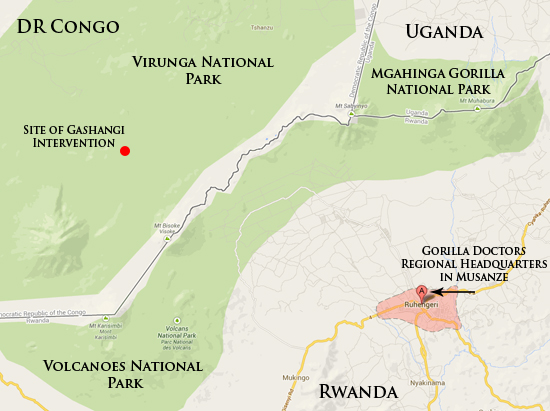
Gashangi returned to Humba group in September 2013, but without her 3-year-old infant. During the first four days of October, she appeared to deteriorate and was reportedly weak, anorexic, and moving slowly with pale hands and feet. In addition, the oral mass was growing and she was often surrounded by flies. Dr. Eddy was informed of Gashangi’s condition on October 4th, and a veterinary assessment with possible intervention was scheduled for the following day on October 5.
Dr. Eddy and I, along with 5 ICCN trackers and 10 HUGO (Human-Gorilla) staff left Bukima camp at 6:40am, finding the group at 9:00am in the Rungu area. Dr. Eddy initially assessed Gashangi visually from 9:00 – 9:14am. She was found within the group, bright, alert, and responsive, but moving slowly. The mass at her left oral commissure had grown and appeared purulent. She had significant muscle atrophy, most noticeable in her arms and legs. Initially, she was not observed eating although her stomach was fairly full; however, prior to darting, she was observed eating bamboo. Due to the appearance of the mass, an intervention for diagnostic purposes was recommended. Gashangi was darted with ketamine and dexmedetomidine at 10:20am and was fully anesthesthetized at 10:26am.
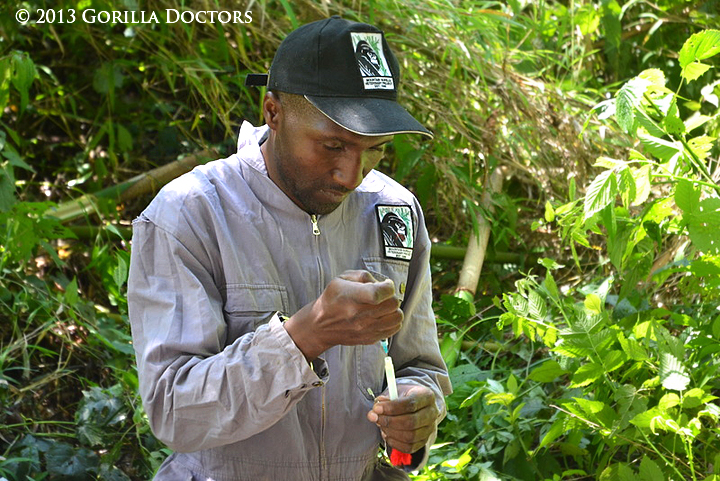 Dr. Eddy prepares the anesthesia dart.
Dr. Eddy prepares the anesthesia dart.
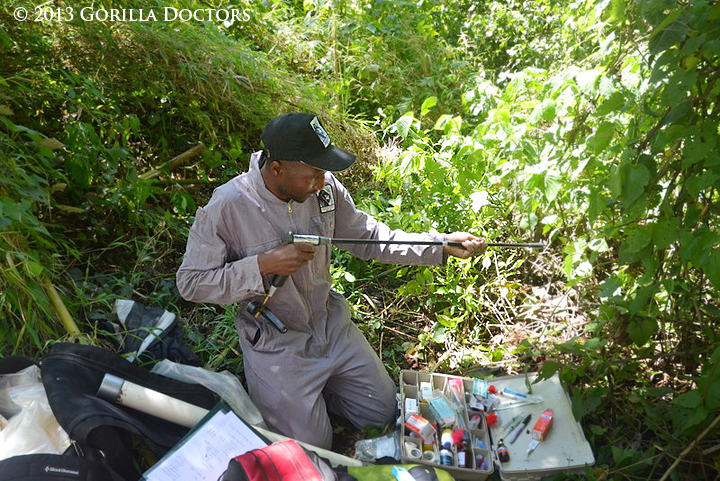 Dr. Eddy prepares to dart Gashangi to deliver anesthesia.
Dr. Eddy prepares to dart Gashangi to deliver anesthesia.
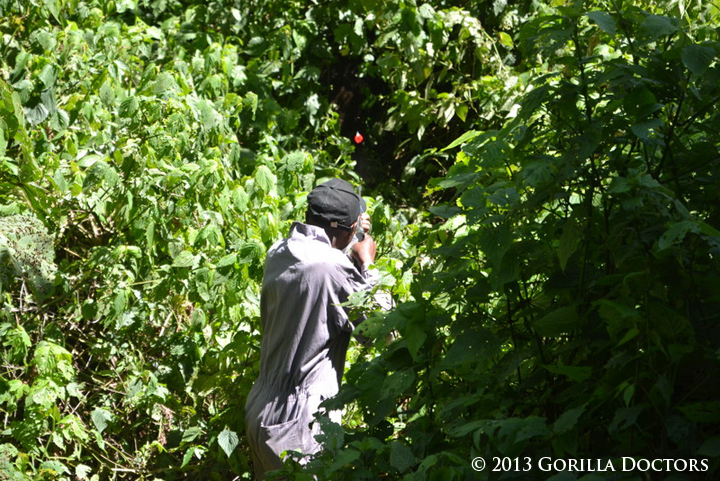 Dr. Eddy fires the dart towards Gashangi, who is hiding in thick vegetation.
Dr. Eddy fires the dart towards Gashangi, who is hiding in thick vegetation.
A complete physical exam was conducted during the intervention. Gashangi was previously thought to be around 20 years old, but the condition of her teeth suggests that she is in fact more than 30 years old. Nasal, oral, vaginal, and rectal swabs were collected for testing, as well as multiple blood samples.
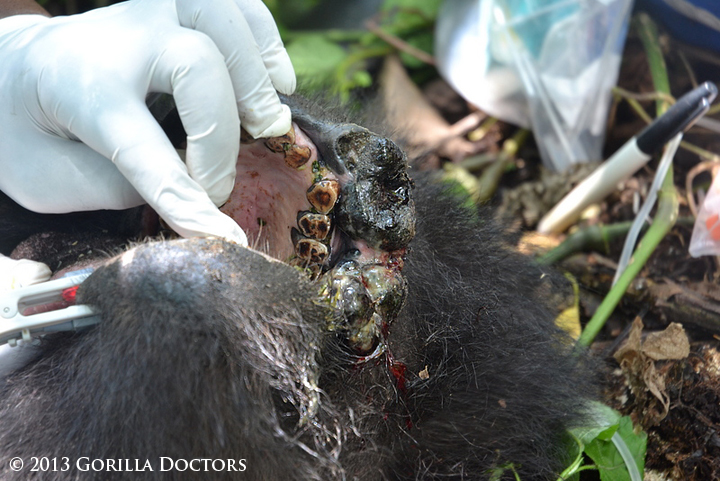 The lesion on the left side of Gashangi’s mouth.
The lesion on the left side of Gashangi’s mouth.
The oral mass was resected and samples were taken for histologic evaluation; a culture swab was taken of the purulent material at the surface of the mass, and impression smears were taken to help discern quickly whether the mass was granulomatous inflammation or cancer. If the former, the resection could be curative.
 Gorilla Doctors conduct an intervention to remove the lesion on elderly female Gashangi’s mouth.
Gorilla Doctors conduct an intervention to remove the lesion on elderly female Gashangi’s mouth.
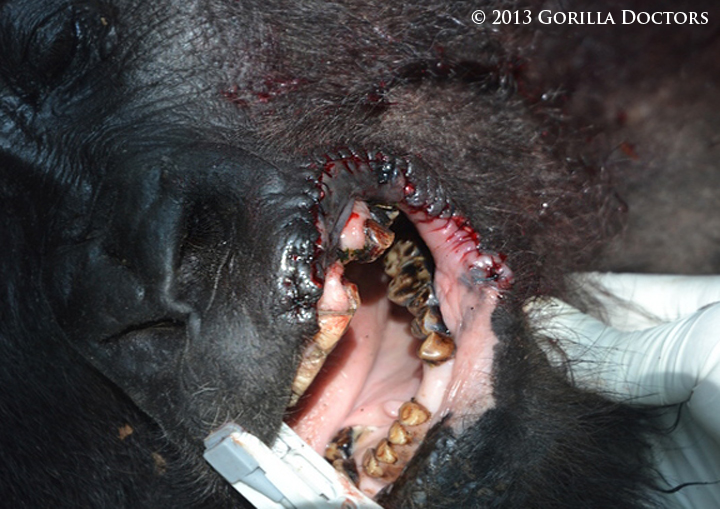 Gorilla Doctors removed the lesion from Gashangi’s lip.
Gorilla Doctors removed the lesion from Gashangi’s lip.
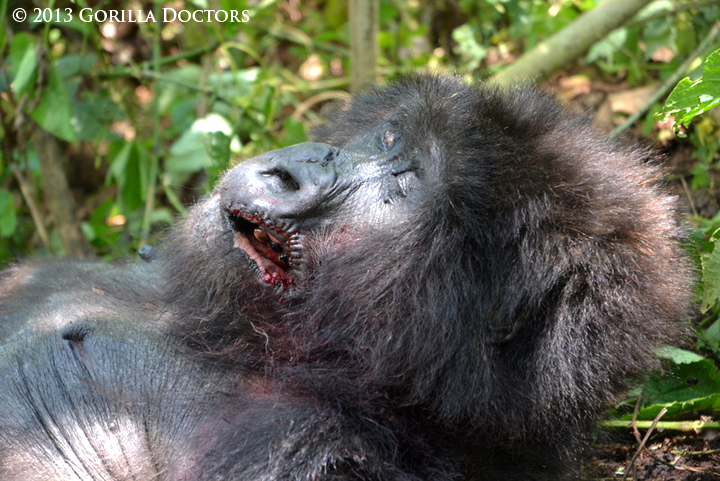 Gashangi, recovering from anesthesia post intervention.
Gashangi, recovering from anesthesia post intervention.
Gashangi was still lactating, although her infant is no longer with her. It is likely that her health was too compromised, exhausting her energy resources, to effectively nurture her infant. Trackers will continue to monitor Gashangi closely and report all progress and/or changes in her condition. Results from the biopsy will be posted when available.
Update:
An initial assessment by Gorilla Doctors Veterinary Pathologist Dr. Linda Lowenstine reveals that the mass is not suggestive of cancer, but further investigation is required to determine the exact cause.
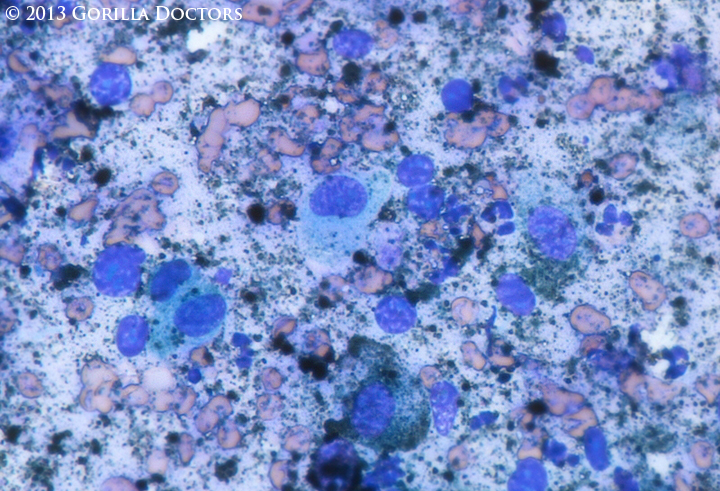
Also, Dr. Eddy assessed Gashangi’s condition the day after the intervention and found the elderly female with her group, feeding and moving. The suture line was intact and there was minimal swelling.
You can follow the Gorilla Doctors health monitoring efforts on our Facebook page, where we post photos and notes from our monthly visits.
Please consider supporting us by making a secure online donation. Every dollar you give goes to directly supporting our gorilla health programs and One Health initiative. Thank you for your generosity.


 Donate
Donate